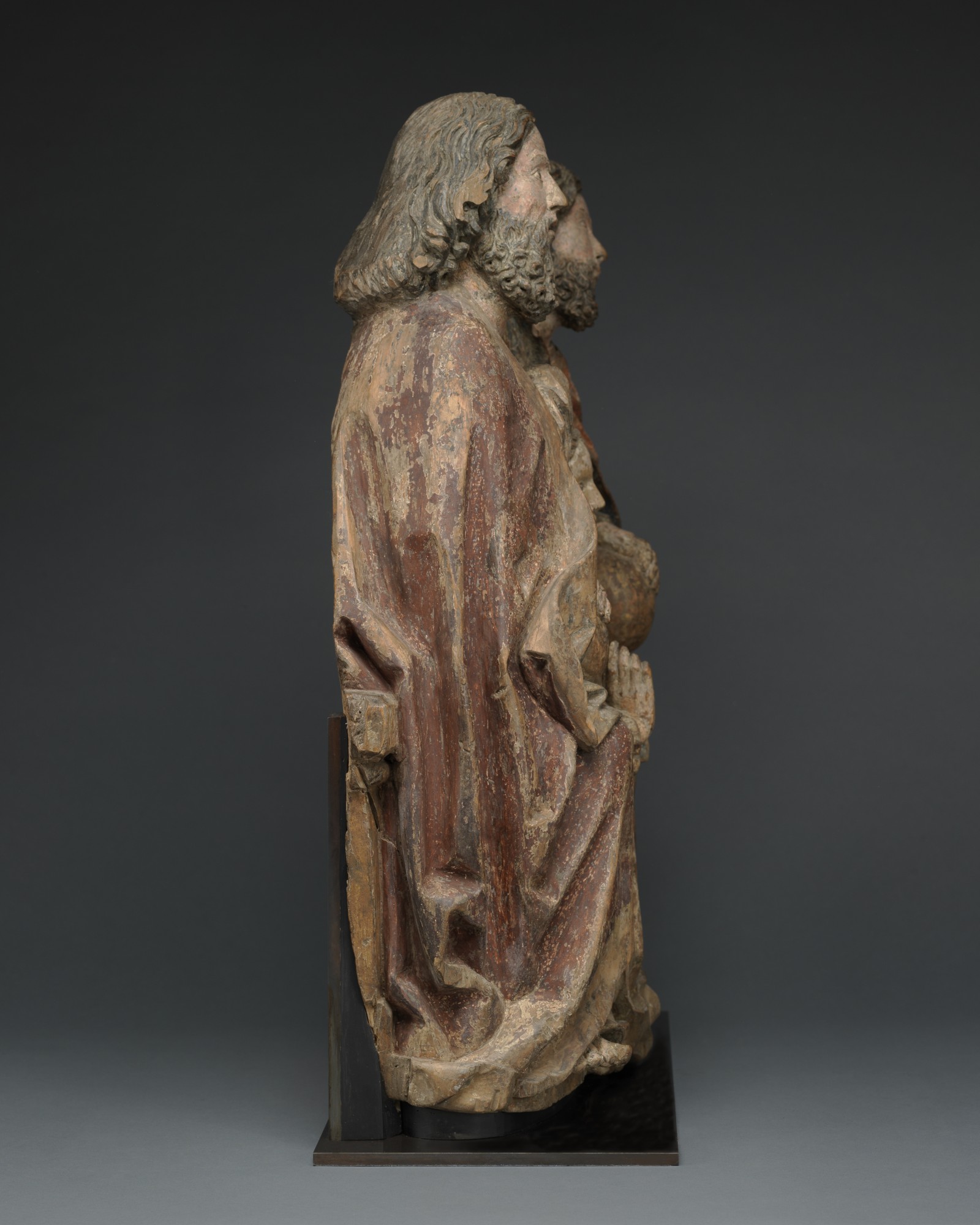


Dr. Gustav Rau Collection, Southern France
Museum Schnütgen, Köln, September 2009 – December 2012 (on loan)
T. Müller (ed.), Die Bildwerke in Holz, Ton und Stein: Von der Mitte des XV. bis gegen Mitte des XVI. Jahrhunderts, Kataloge des Bayerischen Nationalmuseums, München, Band 13:2 (F. Bruckmann, München, 1959), pp. 178-180, no. 177
The Coronation of the Virgin is a subject which was incorporated in many Southern German altarpieces of the middle to late Gothic period. It represents the moment of the elevation of the earthly mother to her celestial and regal position, endowed by God and or her Son with divine status and immortality. Although both scripture and Catholic doctrine are silent concerning Mary being crowned on her assumption to Heaven, this became a celebrated theme popularised by fervent early medieval accounts of her entrance as a ‘glorious queen’ and ‘celestial legions’ leading her to her throne.
Various representations of the crowing of the Virgin as Queen of Heaven may be found with many works adopting the compositional scheme of this outstanding Swabian example. Here Mary kneels between God the Father and the Son who together place the crown on her head. Each holds the lost crown in their (also missing) right hand, their left hands resting on symbolic globes. Differentiated by age, God the Father has a fuller longer beard, time having etched his forehead and area around his eyes. The fine detail of the curls and locks of the beards and the waves of hair on each of the three figures marks this as a work of superb craftsmanship. Variations of this depiction see the Holy Spirit hovering between God the Father and Christ and above Mary.
A comparable group can be found in the Bayerisches Nationalmuseum Munich (Inv. no. MA 1312).